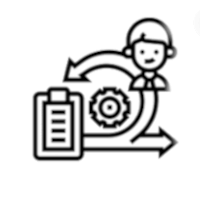Agile / Scrum

Exceptional agile leadership in IT transformation blends technical insight with adaptive delivery. Agile leaders champion inspect-and-adapt principles, empower self-organising teams, and foster transparent collaboration to deliver incremental value. They remove impediments, align initiatives with business goals, and cultivate a culture of experimentation, learning, and continuous improvement — all while ensuring customer-centric outcomes in dynamic environments.
Experience
Macquarie Group – Early Agile Adoption in Financial Services (2014)
Operated in a traditionally structured environment yet embedded agile practices within PRINCE2 projects. Used daily standups and retrospectives to drive focus and accountability, proving agile’s value in risk-averse banking culture.
BAE Systems – Agile Coaching & Culture Shift (2016)
Coached application teams on Scrum fundamentals. Introduced time-boxed ceremonies and retros — transforming meeting efficiency and team ownership. Demonstrated measurable gains in velocity and stakeholder satisfaction.
Rabobank – Scaled Agile Core Banking Migration (2017)
Supported the Programme Director in adopting a scaled agile framework. Facilitated Program Increment (PI) planning, system demos, and Scrum of Scrums. Delivered the Temenos T24 migration using full Scrum — sprint planning, reviews, and retros — marking Rabobank’s first scaled agile success in core banking.
Greencross Vets – Healthy Pets Plus Subscription Migration (2022)
Led a dedicated Scrum team to migrate the flagship pet insurance subscription engine. Delivered fortnightly increments, enabling rapid stakeholder feedback and PCI-compliant deployment with zero disruption.
DevOps & CI/CD Advocacy
Championed the breakdown of silos between development and operations. Established automated regression testing and regular deployment cadences tied to sprint cycles — ensuring fast, reliable value delivery. Recognised that **DevOps maturity** is a leading indicator of agile success.
Credentials
- Certified Scrum Master – 2016
- SAFe™ 6.0 Agilist – 2024
- Active subscriber: *Business Agility* and *A Little Agile* podcasts – 2022–2023
Related Skills
Contact
Connect on LinkedIn to discuss agile transformation leadership.